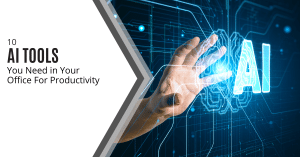Advanced IT solutions for manufacturing enhance operational efficiency and drive innovation. They streamline processes, reduce costs, and improve product quality.
In today’s competitive market, manufacturers must leverage advanced IT solutions to stay ahead. These technologies include automation, IoT, AI, and cloud computing. Automation reduces manual labor and increases productivity. IoT connects machinery for real-time data insights. AI optimizes supply chains and predictive maintenance.
Cloud computing ensures data accessibility and scalability. Manufacturers can achieve higher efficiency, lower costs, and better quality control. Implementing these solutions requires strategic planning and investment. Businesses that adopt advanced IT solutions gain a significant edge. Embracing technology is essential for modern manufacturing success.
Smart Manufacturing Technologies
Smart Manufacturing Technologies are transforming the manufacturing industry. They enable manufacturers to enhance efficiency, reduce costs, and improve product quality. These technologies use advanced IT solutions to create more connected and intelligent manufacturing processes.
Iot In Manufacturing
The Internet of Things (IoT) connects devices and systems in manufacturing. IoT devices can communicate with each other and collect valuable data. This data helps manufacturers monitor equipment, track inventory, and optimize production lines.
- Real-time monitoring of machines
- Predictive maintenance to prevent downtime
- Efficient inventory management
With IoT, manufacturers can make data-driven decisions. This leads to increased productivity and reduced operational costs.
Ai And Machine Learning
Artificial Intelligence (AI) and Machine Learning (ML) are revolutionizing manufacturing processes. These technologies analyze vast amounts of data to identify patterns and predict outcomes. AI and ML help in quality control, process optimization, and decision-making.
- Automated quality inspection
- Production process optimization
- Enhanced decision-making
Using AI and ML, manufacturers can detect defects early. They can also adjust processes to maintain high quality and efficiency.
Automation And Robotics
Manufacturing is changing fast with automation and robotics. These technologies increase efficiency and reduce costs. They also improve product quality and worker safety. Let’s explore how automated production lines and collaborative robots are transforming the industry.
Automated Production Lines
Automated production lines streamline the manufacturing process. Machines handle repetitive tasks accurately and quickly. This reduces human error and speeds up production. Factories can produce more items in less time. Automated lines also lower labor costs. Here are some key benefits:
- Increased production speed
- Reduced human error
- Lower labor costs
- Consistent product quality
Automated lines can adapt to different products. This flexibility is crucial for modern manufacturing. Companies can switch production lines quickly. This helps meet changing market demands.
Collaborative Robots
Collaborative robots, or cobots, work alongside humans. They are designed to be safe and easy to use. Cobots help with tasks that are too dangerous or repetitive for humans. They can also handle delicate tasks with high precision. Here are some features of cobots:
| Feature | Benefit |
|---|---|
| Safety | Work safely with humans |
| Flexibility | Adapt to different tasks |
| Precision | Handle delicate operations |
Cobots are easy to program and deploy. They can be integrated into existing production lines. This makes them a valuable asset for manufacturers. Cobots help increase productivity and improve workplace safety.
Data Analytics And Insights
Data analytics in manufacturing helps improve efficiency. It provides valuable insights for decision-making. Using data, manufacturers can optimize processes and reduce waste. Data analytics ensures a smarter production environment.
Predictive Maintenance
Predictive maintenance uses data to predict equipment failures. It helps schedule maintenance before breakdowns occur. This reduces downtime and saves money.
Key benefits of predictive maintenance include:
- Increased equipment lifespan
- Reduced maintenance costs
- Improved production efficiency
| Traditional Maintenance | Predictive Maintenance |
|---|---|
| Reactive approach | Proactive approach |
| Unplanned downtime | Scheduled interventions |
| Higher costs | Cost savings |
Real-time Monitoring
Real-time monitoring tracks production in real-time. It provides instant insights into manufacturing processes. This helps identify issues quickly and improve performance.
Advantages of real-time monitoring:
- Immediate problem detection
- Better quality control
- Enhanced decision-making
Real-time data ensures manufacturers stay competitive. It leads to more efficient operations and higher product quality.
Cloud Computing In Manufacturing
Cloud computing is transforming the manufacturing sector. It provides scalable, efficient, and cost-effective solutions. Manufacturers are leveraging cloud technology to optimize processes, reduce costs, and improve productivity. This section explores the significance of cloud computing in manufacturing.
Cloud-based Erp Systems
Cloud-based ERP systems are revolutionizing manufacturing. They offer real-time data access and streamlined operations. These systems integrate various functions like production, inventory, and finance. Manufacturers can make informed decisions quickly.
| Feature | Benefit |
|---|---|
| Real-time Data | Faster decision-making |
| Scalability | Adapts to business growth |
| Cost-Efficiency | Reduces IT expenses |
| Accessibility | Remote operations possible |
With cloud-based ERP, manufacturers can automate tasks. This leads to increased efficiency and reduced errors. Employees can access information from anywhere. This flexibility improves collaboration and productivity.
Data Security
Data security is crucial in manufacturing. Cloud providers offer robust security measures. These include encryption, firewalls, and regular audits. Manufacturers can protect sensitive information from cyber threats.
- Encryption: Ensures data privacy
- Firewalls: Prevent unauthorized access
- Regular Audits: Maintain security compliance
Cloud solutions also offer backup and recovery options. This ensures data is safe even during disruptions. Manufacturers can quickly recover critical information. This minimizes downtime and maintains productivity.
Investing in cloud computing enhances manufacturing processes. It provides scalability, security, and efficiency. Embrace cloud technology for a competitive edge.
Supply Chain Optimization
Supply chain optimization is crucial for manufacturing industries. It ensures efficient operations and cost savings. Advanced IT solutions play a vital role in this optimization. These solutions improve processes, reduce waste, and enhance productivity. Let’s explore two key areas: Inventory Management and Demand Forecasting.
Inventory Management
Effective inventory management is essential for manufacturing. It minimizes costs and maximizes efficiency. Advanced IT solutions help track inventory in real-time. They provide accurate data on stock levels and locations.
Consider the following benefits of advanced inventory management systems:
- Automated Reordering: Systems can automatically reorder stock. This prevents shortages and overstocking.
- Real-Time Tracking: Monitor inventory levels in real-time. This reduces the risk of stockouts.
- Warehouse Efficiency: Improve warehouse layout and picking processes. This ensures faster order fulfillment.
Here is a table summarizing key features:
| Feature | Benefit |
|---|---|
| Automated Reordering | Prevents shortages and overstocking |
| Real-Time Tracking | Reduces risk of stockouts |
| Warehouse Efficiency | Faster order fulfillment |
Demand Forecasting
Accurate demand forecasting is critical for supply chain optimization. It predicts future customer demand. Advanced IT solutions use historical data and algorithms. These tools provide reliable forecasts.
Key advantages include:
- Improved Planning: Align production schedules with demand forecasts. This reduces waste and improves efficiency.
- Cost Savings: Avoid overproduction and excess inventory. This saves storage and production costs.
- Customer Satisfaction: Meet customer demands promptly. This boosts customer satisfaction and loyalty.
Effective demand forecasting ensures a balanced supply chain. It aligns production with market demand. This results in optimal resource utilization and cost savings.
Additive Manufacturing
Additive Manufacturing has revolutionized the manufacturing industry. This technology builds objects layer by layer. It offers unmatched precision and flexibility.
3d Printing Applications
3D printing has many applications in manufacturing.
- Creating complex geometries
- Producing lightweight structures
- Customizing parts for specific needs
3D printing can produce parts quickly and efficiently. It reduces material waste. This technology helps in creating prototypes and end-use products.
Rapid Prototyping
Rapid prototyping allows manufacturers to quickly test new ideas.
| Benefits | Details |
|---|---|
| Speed | Prototypes can be created in hours. |
| Cost-Effective | Reduces the need for expensive molds. |
| Flexibility | Designs can be easily modified. |
Rapid prototyping helps in identifying design flaws early. It allows for quick iterations. This leads to better final products.
Human-machine Collaboration
The future of manufacturing is evolving with Human-Machine Collaboration. This involves humans and machines working together seamlessly. Such collaboration improves efficiency and productivity. Advanced IT solutions drive this innovation. Two key areas of focus are Augmented Reality and Virtual Training.
Augmented Reality
Augmented Reality (AR) blends digital information with the real world. Workers use AR glasses or tablets. These devices overlay digital data onto physical objects. This helps workers perform tasks more efficiently.
For example, AR can guide workers through assembly processes. It shows step-by-step instructions directly on the machinery. Workers can see 3D models of parts. This reduces errors and speeds up production.
AR also aids in maintenance and repair. Technicians receive real-time data on machine performance. They can identify issues quickly. This minimizes downtime and keeps production running smoothly.
Virtual Training
Virtual Training uses digital simulations for worker training. It provides a safe and controlled environment. Workers learn to operate complex machinery without risks.
Virtual Training is interactive and engaging. Workers wear VR headsets and use hand controllers. They practice tasks in a virtual factory. This method improves skill retention and confidence.
A major benefit is cost savings. Companies save on physical materials and reduce equipment wear and tear. Virtual Training also allows for repeated practice. Workers can train as often as needed without extra costs.
| Benefit | Augmented Reality | Virtual Training |
|---|---|---|
| Efficiency | Guides through assembly, reduces errors | Interactive practice, improves skill retention |
| Cost | Minimizes downtime | Saves on materials and equipment |
| Safety | Real-time data for quick issue resolution | Safe training environment |
In summary, Human-Machine Collaboration transforms manufacturing. Augmented Reality and Virtual Training are key components. They enhance efficiency, safety, and cost-effectiveness. Embracing these technologies ensures a competitive edge.
Sustainable Manufacturing Solutions
Embracing sustainable manufacturing solutions is crucial for the future. Advanced IT solutions help in achieving this goal. Let’s explore two key areas: energy efficiency and waste reduction.
Energy Efficiency
Improving energy efficiency is vital for sustainable manufacturing. Using smart sensors and IoT devices can monitor energy use. This helps in identifying areas where energy is wasted.
Implementing automated systems can optimize energy consumption. This reduces costs and lowers the carbon footprint. Below are some methods to enhance energy efficiency:
- Installing energy-efficient lighting systems
- Using variable speed drives for motors
- Implementing smart HVAC systems
| Method | Benefit |
|---|---|
| Energy-efficient lighting | Reduces electricity consumption |
| Variable speed drives | Optimizes motor performance |
| Smart HVAC systems | Improves temperature control |
Waste Reduction
Minimizing waste is another key aspect of sustainable manufacturing. Advanced IT solutions can track waste production. This allows for quick identification of waste sources.
Implementing recycling programs can further reduce waste. Using predictive analytics helps in forecasting waste generation. Here are some strategies for waste reduction:
- Implementing just-in-time inventory systems
- Using reusable packaging materials
- Optimizing production processes
| Strategy | Benefit |
|---|---|
| Just-in-time inventory | Reduces overproduction |
| Reusable packaging | Decreases packaging waste |
| Optimized processes | Minimizes material waste |
Frequently Asked Questions
What Are Advanced It Solutions In Manufacturing?
Advanced IT solutions in manufacturing include IoT, AI, machine learning, and ERP systems. These technologies improve efficiency, reduce costs, and enhance product quality.
How Do It Solutions Improve Manufacturing?
IT solutions streamline processes, increase automation, and provide real-time data insights. This leads to better decision-making, reduced downtime, and higher productivity.
Why Is Iot Important In Manufacturing?
IoT connects machines and devices, enabling real-time monitoring and data collection. This improves efficiency, predictive maintenance, and reduces operational costs.
What Role Does Ai Play In Manufacturing?
AI optimizes production processes through predictive analytics and machine learning. It helps in quality control, demand forecasting, and reduces human error.
Conclusion
Embracing advanced IT solutions transforms manufacturing efficiency and productivity. These technologies streamline processes, enhance quality, and reduce costs. Staying ahead with innovative IT strategies ensures competitiveness in a rapidly evolving market. Invest in these solutions to unlock your manufacturing potential and drive success in the digital age.








